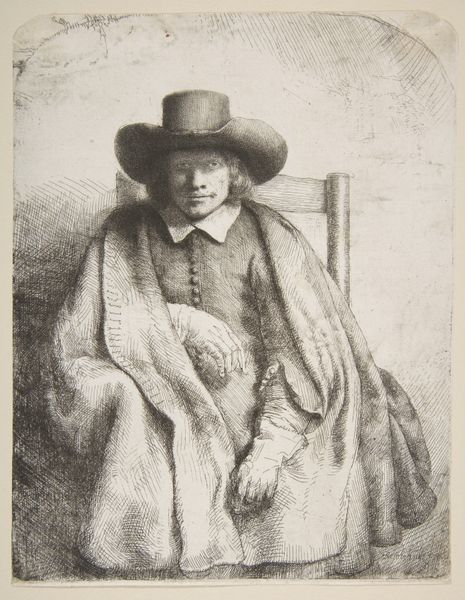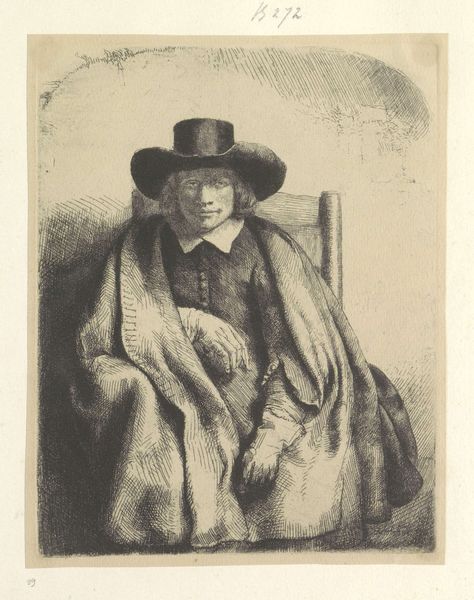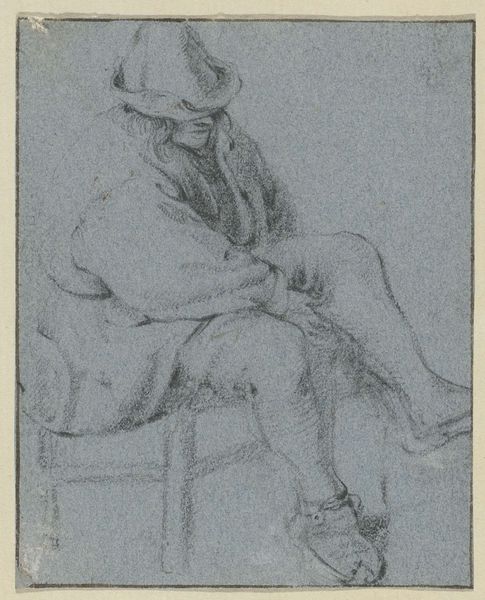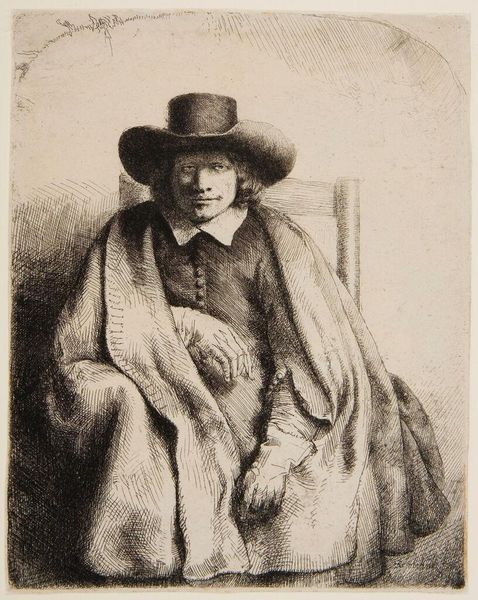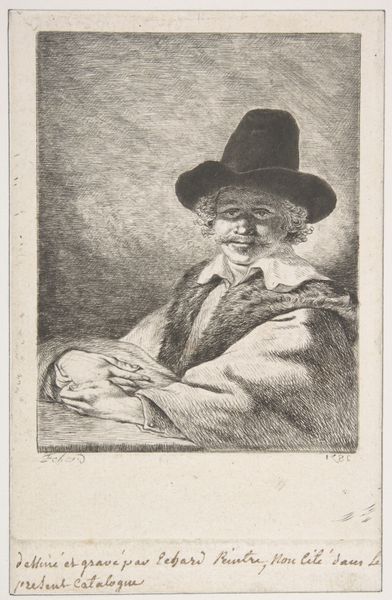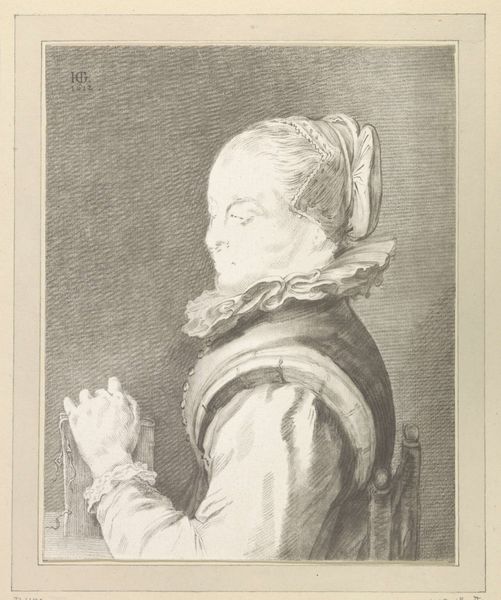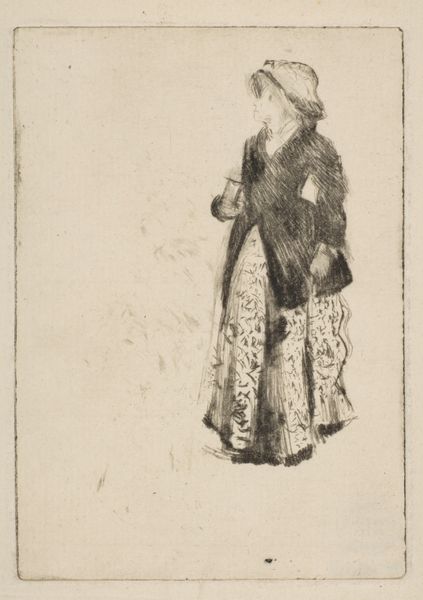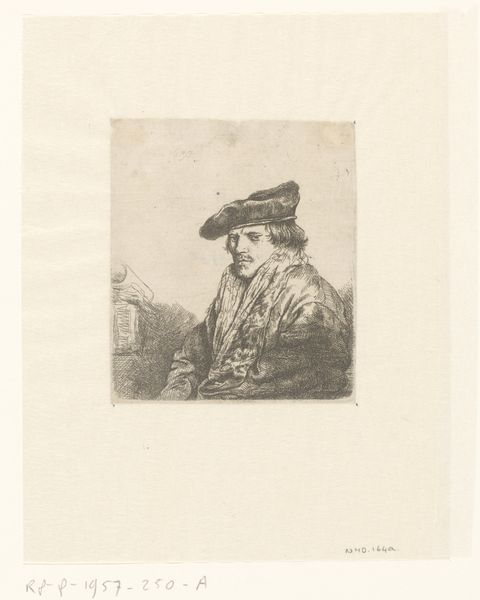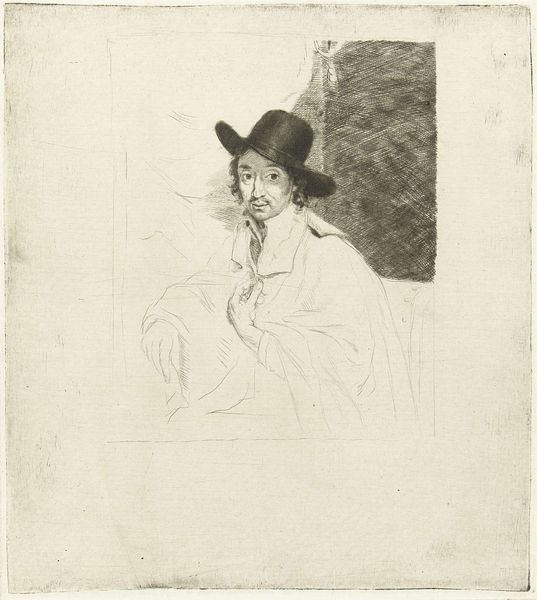
print, etching
#
portrait
#
pencil drawn
#
baroque
#
dutch-golden-age
# print
#
etching
#
pencil sketch
#
figuration
#
line
#
realism
Dimensions: 21 x 16 cm
Copyright: Public domain
Rembrandt van Rijn created this "Portrait of Clement de Jonge" using etching, a printmaking technique, on a metal plate. The magic of etching lies in its process. Rembrandt would have coated a copper plate with a waxy, acid-resistant substance, then scratched his design into it with a needle, exposing the metal beneath. When dipped in acid, the exposed lines would be bitten, creating grooves. The plate is then inked, the surface wiped clean, and the ink remaining in the grooves is transferred to paper under immense pressure. Look closely, and you can see the dense cross-hatching of fine lines that create the image, a testament to Rembrandt’s skill and labor. What is so fascinating is that Rembrandt was also a businessman, printing and selling his own works. Etchings such as this one, allowed him to produce multiple original artworks, engaging with emerging markets for art during the Dutch Golden Age. The material and process are inextricably linked to the social context of its creation. By understanding how it was made, we can better understand its place in history.
Comments
No comments
Be the first to comment and join the conversation on the ultimate creative platform.

